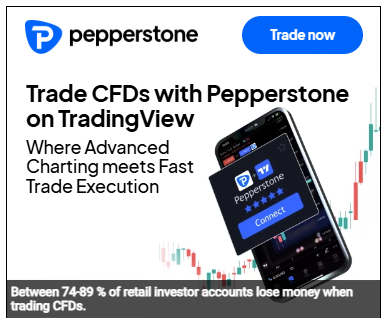
5 minute read
Pepperstone Vs Fp Markets 2025: Compared - which is better broker?
from Pepperstone compare
by Jone Eva
Choosing between Pepperstone and FP Markets can be tough—they’re both well-regarded forex and CFD brokers offering ECN-style trading, global platforms, and low spreads. But which one is truly better for your trading style?
👉 Open Your Pepperstone Account Today and access powerful tools, tight spreads, and top-tier support.
Let’s explore this side-by-side comparison across every major factor that matters.

Company Background and Reputation
Pepperstone was established in 2010 in Australia and has since expanded its presence globally. It serves traders in over 100 countries and is consistently ranked among the most trusted brokers in the world.
FP Markets, also Australian-based, was founded in 2005 and has a strong reputation for ECN pricing and client support. It’s known for providing excellent infrastructure for professional and algorithmic traders.
Both brokers have won numerous awards, but Pepperstone has wider international recognition due to its broader regulatory footprint.
Regulation and Licensing
Pepperstone is regulated by multiple top-tier bodies, including ASIC (Australia), FCA (UK), BaFin (Germany), DFSA (Dubai), CySEC (EU), and SCB (Bahamas). This makes it one of the most widely licensed brokers globally.
FP Markets is regulated by ASIC and CySEC. It also operates offshore under FSA Seychelles for global traders.
While both are safe and compliant, Pepperstone has more regulatory depth and presence in key jurisdictions like the UK and UAE, which adds a layer of trust and client protection.
Trading Instruments and Market Coverage
Pepperstone provides access to over 1,200 instruments, including forex pairs, indices, commodities, ETFs, and cryptocurrencies—primarily via CFDs.
FP Markets offers over 10,000 instruments, including both CFDs and direct equities (on their IRESS platform for Australian clients). This gives them an edge in terms of share trading diversity, though most traders outside Australia primarily use their MetaTrader CFD offering.
For global CFD traders, both are comparable. For those focused on real stock access, FP Markets has a slight advantage (for Australians).
Account Types and Minimum Deposits
Pepperstone offers:
Standard Account: Commission-free with wider spreads
Razor Account: Low spreads plus a small commission (perfect for scalpers)
FP Markets offers:
Standard Account: No commission
Raw Account: Low spreads with commission, similar to Pepperstone’s Razor
Both brokers allow minimum deposits as low as $100, making them accessible to new traders. Their ECN pricing structures are nearly identical, though Pepperstone tends to offer slightly tighter spreads on major pairs.
Spreads, Commissions, and Trading Costs
Pepperstone’s Razor account offers:
Spreads from 0.0 pips
Commission of $3.50 per side per lot
FP Markets’ Raw account also starts at 0.0 pips, with a similar commission model.
While both brokers are highly competitive, Pepperstone often edges ahead in terms of overall average spreads and trade execution speed, particularly during peak news events.

Trading Platforms and Execution Speed
Pepperstone supports:
MetaTrader 4 & 5
cTrader
API and VPS integration
FP Markets offers:
MetaTrader 4 & 5
IRESS platform for Australian equities
VPS and FIX API access
Both brokers offer excellent execution with low latency. However, Pepperstone has more global server hubs and broader infrastructure for ultra-low latency, giving it a slight lead for high-frequency or algorithmic traders.
Tools, Education, and Analytics
Pepperstone provides:
Smart Trader Tools (MT4 add-ons)
Daily market updates
Webinars, trading guides, and strategy series
Copy trading via Myfxbook and DupliTrade
FP Markets offers:
Autochartist integration
Daily technical and fundamental analysis
Educational videos and eBooks
Social trading via Myfxbook
Both brokers offer strong educational content, but Pepperstone’s structured learning and premium tools are more appealing to advanced traders.
Deposit & Withdrawal Methods
Pepperstone supports:
Visa, Mastercard, bank transfer
PayPal, Skrill, Neteller
Fee-free deposits and fast withdrawals
FP Markets supports:
Credit/debit cards, wire transfer
Local deposit options in Asia
Skrill, Neteller, FasaPay
Both brokers are efficient, but Pepperstone’s withdrawal processing speed is faster, with most payments cleared within 1–2 business days.
Customer Support and User Experience
Pepperstone offers 24/5 support via live chat, email, and phone. Multilingual support is available, and its Help Center is thorough and responsive.
FP Markets also offers 24/5 support and has a strong reputation for personal attention and prompt service.
While both provide top-quality service, Pepperstone’s broader language coverage and global offices make it more accessible to international users.
Pros and Cons – Pepperstone vs FP Markets
Pepperstone stands out with:
Ultra-tight spreads
Fast execution infrastructure
Broader regulation and global presence
Wide selection of advanced platforms
FP Markets shines with:
Access to real stocks (Australia)
Strong ECN trading for beginners
Localized deposit options in some regions
Pepperstone is better suited for traders who need international regulation, multiple platforms, and low latency. FP Markets is excellent for those looking for simplicity, stock access (in Australia), and deep liquidity.
FAQs – Pepperstone Vs FP Markets Compare
1. Which broker is more regulated?Pepperstone. It has licenses from six global regulators, while FP Markets is regulated by ASIC, CySEC, and FSA Seychelles.
2. Does FP Markets offer real stocks?Yes, but only through its IRESS platform for Australian clients. Pepperstone offers only CFDs.
3. Which has better spreads?Both are very competitive, but Pepperstone has a slight edge on average across major forex pairs.
4. Is cTrader available on both brokers?No. Only Pepperstone offers cTrader. FP Markets supports only MetaTrader and IRESS.
5. Which is better for copy trading?Both support Myfxbook AutoTrade. Pepperstone also integrates DupliTrade, offering more options.
6. Who offers faster withdrawals?Pepperstone typically processes withdrawals quicker, usually within 24–48 hours.
Conclusion: Which Broker Should You Choose in 2024?
If you're looking for a globally regulated broker with professional-grade platforms, Pepperstone is the better choice. Its razor-sharp spreads, fast execution, and deep liquidity infrastructure make it ideal for both beginners and experts.
👉 Join Pepperstone Now and experience award-winning service, advanced tools, and peace of mind with a trusted broker.
However, if you're based in Australia and want access to direct stock trading alongside forex, FP Markets could be a worthwhile alternative.
Ultimately, both are strong brokers—but Pepperstone wins for global traders seeking performance, security, and reliability.
See more:
Is Pepperstone Available in Pakistan
Is Pepperstone Available in India
Is Pepperstone Available in Philippines

